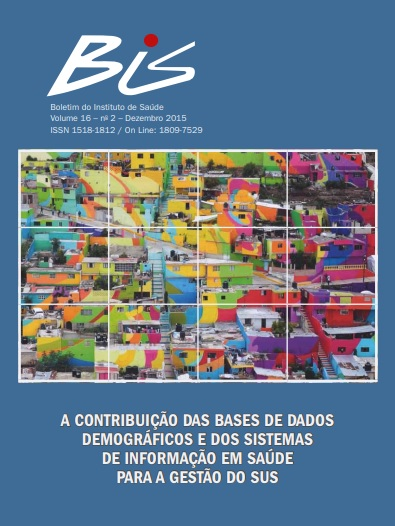Abstract
Prostate cancer is the second most common cancer in men. Ap- he second most common cancer in men. Approximately 62% of cases of prostate cancer diagnosed in the world refer to men aged 65 years or older. This cancer is 1.6 times more common in blacks than in white men. Prostate cancer can be considered a good prognosis if diagnosed and treated timely. There is a type of cancer called metastatic castration-resistant prostate cancer for which it has been used a new drug, abiraterone acetate in combination with prednisone or prednisolone. From January to October 2013, the Health Secretariat of Sao Paulo State spent R $ 2,278,708.00 with abiraterone to serve 66 patients in lawsuits. This study was conducted to examine the scientific evidence on efficacy and safety of abiraterone. The search for articles in various databases was conducted in March 2014. The selection was limited to systematic reviews published in English, Spanish and Portuguese. Quality and methodological rigor of the selected studies were evaluated by the AMSTAR instrument, and the extraction of data from each study was carried out by two researchers independently. In the analysis it was considered only four systematic reviews whose results favored abiraterone compared to prednisone alone, with respect to overall survival, radiographic progressionfree survival and time to PSA progression. The occurrence of adverse events was similar for both groups, but the group treated with abiraterone there was an increase in the risk of serious cardiac disorders.
References
2013;16(4):323-7.
3. INCA – Instituto Nacional de Câncer José Alencar Gomes da Silva. Coordenação Geral de Ações Estratégicas. Coordenação de Prevenção e Vigilância. Estimativa 2012: incidência de câncer no Brasil. Instituto Nacional de Câncer José Alencar Gomes da Silva, Coordenação Geral de Ações Estratégicas, Coordenação de Prevenção e Vigilância. – Rio de Janeiro: Inca, 2011. 118 p. [acesso em 23 nov 2015]. Disponível em: http://portal.saude.sp.gov.br/resources/ses/perfil/gestor/homepage/estimativas-de-incidencia-de-cancer 2012/estimativas_incidencia_cancer_2012.pdf
4. Lemos ML. NNT for studies with long-term follow-up. CMAJ. 2005;172(5):613-5; author reply. [acesso em 23 nov 2015]. Disponível em: http://www.cmaj.ca/content/172/5/613.2.full.pdf+html
5. Martel G, Duhaime S, Barkun JS, et al. The quality of research synthesis in surgery: the case of laparoscopic surgery for colorectal cancer. Syst Rev. 2012;1:14. [acesso em 23 nov 2015]. Disponível em: http://www.systematicreviewsjournal.com/content/pdf/2046-4053-1-14.pdf
6. Ministério da Saúde. Secretaria de Atenção à Saúde. Instituto Nacional de Câncer. TNM: classificação de tumores malignos / traduzido por Ana Lúcia Amaral Eisenberg. 6.ed. – Rio de Janeiro: INCA, 2004. 254p. [acesso em 23 nov 2015]. Disponível em: http://bvsms.saude.gov.br/bvs/
publicacoes/inca/tnm2.pdf
7. Ministério da Saúde. Secretaria de Ciência, Tecnologia e Insumos Estratégicos. Departamento de Ciência e Tecnologia. Diretrizes metodológicas: elaboração de parecerestécnico-científicos / Ministério da Saúde, Secretaria de Ciência, Tecnologia e Insumos Estratégicos, Departamento
de Ciência e Tecnologia. – 4. ed. – Brasília : Ministério da Saúde, 2014. 80 p. [acesso em 23 nov 2015]. Disponível
em: http://bvsms.saude.gov.br/bvs/publicacoes/diretrizes_metodologicas_elaboracao_parecer_tecnico.pdf
8. Ministério da Saúde. Secretaria Nacional de Assistência à Saúde. Instituto Nacional de Câncer. Coordenação de Prevenção e Vigilância – Conprev. Câncer da próstata: consenso – Rio de Janeiro: INCA, 2002. 20p. [acesso em 23 nov 2015]. Disponível em: http://bvsms.saude.gov.br/bvs/
publicacoes/inca/manual_prostata.pdf
9. Mottet N, Bastian PJ, Bellmunt J, et al. Guidelines on prostate cancer. European Associaton of Urology 2014. 172p. [acesso em 23 nov 2014]. Disponível em: http://uroweb.org/wp-content/uploads/1607-Prostate-Cancer_LRV3.pdf
10. Pereira TV, Patsopoulos NA, Salanti G, Ioannidis JP: Critical interpretation of Cochran’s Q test depends on power and prior assumptions about heterogeneity. Res Synth Methods 2010, 1:149-161.
11. Seal BS, Asche CV, Puto K, Allen PD. Efficacy, patient-reported outcomes (PROs), and tolerability of the changing therapeutic landscape in patients with metastatic prostate cancer (MPC): a systematic literature review. Value Health.2013;16(5):872-90.
12. Zhou ZR, Liu SX, Zhang TS, Xia J, Li B. Abiraterone for Treatment of Metastatic Castration-resistant Prostate Cancer: a Systematic Review and Meta-analysis. Asian Pac J Cancer Prev. 2014;15(3):1313-20. [acesso em 23 nov 2015]. Disponível em: http://www.apocpcontrol.org/paper_
file/issue_abs/Volume15_No3/1313-1320%2012.13%20Zhirui%20Zhou.pdf

This work is licensed under a Creative Commons Attribution 4.0 International License.
Copyright (c) 2015 Tereza Setsuko Toma, Andreia de Fátima Nascimento, Sonia Isoyama Venancio, Patricia Nieri Martins
